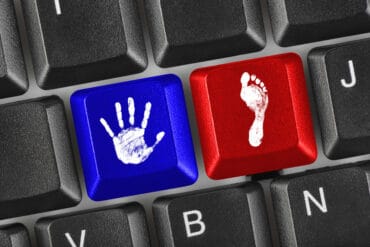The traditional supply chain is vulnerable to a wide range of threats – environmental disasters, infrastructure threats, labor shortages, and, unsurprisingly, a worldwide pandemic. What is surprising is that even in an era of rapid digitalization of business systems globally, the analysis and response to supply chain disruptions are continuing to function in dated manual technologies, rarely driven by data. That’s why there is a new focus on using digital twins to help.
Why? Recent disruptions have brought about a reckoning to the vulnerabilities of supply chains. Internally, C-Suite leaders and shareholders have been awakened to how much of their supply chains are manual, with many companies operating blind with regard to their real-time status. Preventing disruption is what every supply chain executive and their team seeks to keep goods flowing, internal and external clients satisfied, and customers happy.
For many companies, the fastest path to building a resilient supply chain bolstered by data and insights will be with a digital twin, a digital replica of real-world processes and systems. Indeed, it’s estimated that 80% of participants in industry ecosystems will rely on digital twins by 2025 to share their data and insights, and supply chain operators are no exception. How fast these supply chain operators build and see results from their supply chain will depend on where they start and which internal clients they prioritize for support.
The digitalization of supply chain processes is allowing organizations to create efficiencies, forecast potential slowdowns, and avoid serious problems. But supply chain digital nirvana isn’t built in a day, a week, or even a few months. A common misconception is that getting there requires the digitalization of almost the entire supply chain or, at minimum, a supply chain control tower.
See also: Digital Twins Promise to Unclog the Supply Chain
Supply chain digital twins support a simple but critical organization role: providing greater visibility into the organization’s supply chain and future responsiveness, allowing for potential disruptions to be simulated, different designs to be tested, and helping it make strategic decisions based on actionable insights. The end goal is preventing disruption and optimizing productivity.
With an ever-greater volume of new data available for sharing across the supply chain ecosystem, more organizations can efficiently create digital twins to advise their business strategy. Digital twins can be configured using data manually extracted from systems or obtained from the businesses which make up the supply chain. In some cases, arrangements can be made for GPS trackers to be placed on critical components and products, and the resultant event data used to configure the digital twin.
The key starting point is to map out the suppliers of critical components and products of your supply chain, identifying those most vulnerable to disruption. Surprisingly, this is often overlooked by companies. For example, manufacturing companies are often unaware of who the suppliers are to their critical suppliers and the consequent potential supply chain risk. This means that companies should first:
- Identify the key points of vulnerability and assess whether the risk drivers at these nodes can be monitored.
- Determine whether there are lead indicators and whether forecasting potential risk events is possible. Then model the most disruptive risk events in the digital twin.
The digital twin can simulate the normal supply chain flows and enable risk event modeling and demonstrate the impacts of these potential events in terms of delivery performance, cost, and other upstream aspects such as inventory.
Another critical step is to understand and prioritize where the digital twin can deliver the most results within the organization. Organizations can leverage a digital twin to prevent supply chain disruption in a few areas:
- Sales and operations. Without accurate insight into demand forecasts and sales orders, the organization’s ability to manufacture and/or procure goods — its lifeblood — is in jeopardy. A digital twin can help sales teams run “what if” scenarios to assess risk and determine the most cost-efficient balance of demand with supply. Because the virtual environment is an opportune one to try scenarios that could pose risk, a digital twin can also drive your sales team to explore options that they may never have considered before. For example, they can try strategies that give customers what they need but with less cost.
- Transportation assets. The virtual environment provides the ability to run simulations and analyze data to experiment with the timing and efficiencies of trucks, rail, and plane transport to not only assess the impact to your business but how to reduce delays and disruptions. The digital twin can help you configure data so you know when to conduct maintenance and where in an overall effort to help reduce risk. A digital twin can provide a greater sense of where bottlenecks are likely, enabling organizations to create alternative routes.
- Warehouses and distribution centers. With the shortage of commercial storage space across the U.S., operators can use a digital twin to virtually assess every dock, yard, warehouse, and any other space to make sure they are being used in the most effective way possible. Not only that, by simulating loading and unloading sequences, they can determine the best pathways for movement, cut down idle time for truckers, and optimize how to seamlessly move goods through every square foot of space.
- Fleet routing. Orchestrating routing is a science that a digital twin can enhance. Users can recreate every mile of road or rail to find the most efficient route without sacrificing customer expectations. Sustainability also plays a major factor. In an era of rising fuel costs, users can potentially reduce their consumption by reducing the number of miles on the road while also designing routes that make the lowest environmental impact.
A supply chain digital twin does more than visually “bring to life” the current state, vulnerabilities, and risks. Digital twins become strategic advisors for different groups within the organization and for evolving the business’s risk mitigation and resilience process to be driven by data.
Much like cybersecurity and remote work shifted focus and funding to CIOs, disruptions have many companies focused on mitigating future disruptions and building supply chain resilience. The key support should be on providing the supply chain teams with the right tools to achieve this goal and to provide the right insights back to executives and shareholders. This is the time to seek investment and funding for digitalization initiatives. Management should review technology projects and focus on ensuring the appropriate budgets and resources are made available for supply chain technology.
While technology cannot directly prevent a breakdown or pause downtime or even predict a pandemic or a labor shortage, digital twins can make organizations smarter in how they make decisions and respond to external events, so disruptions become less of a risk and potentially an opportunity.






























